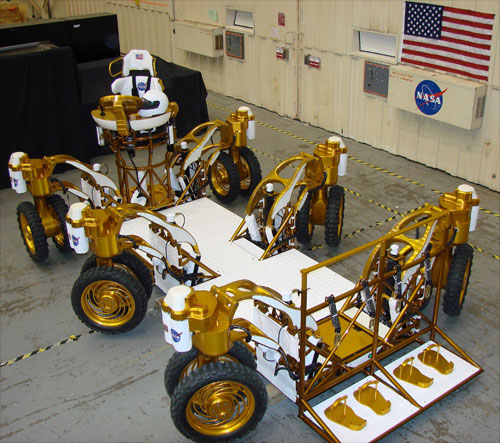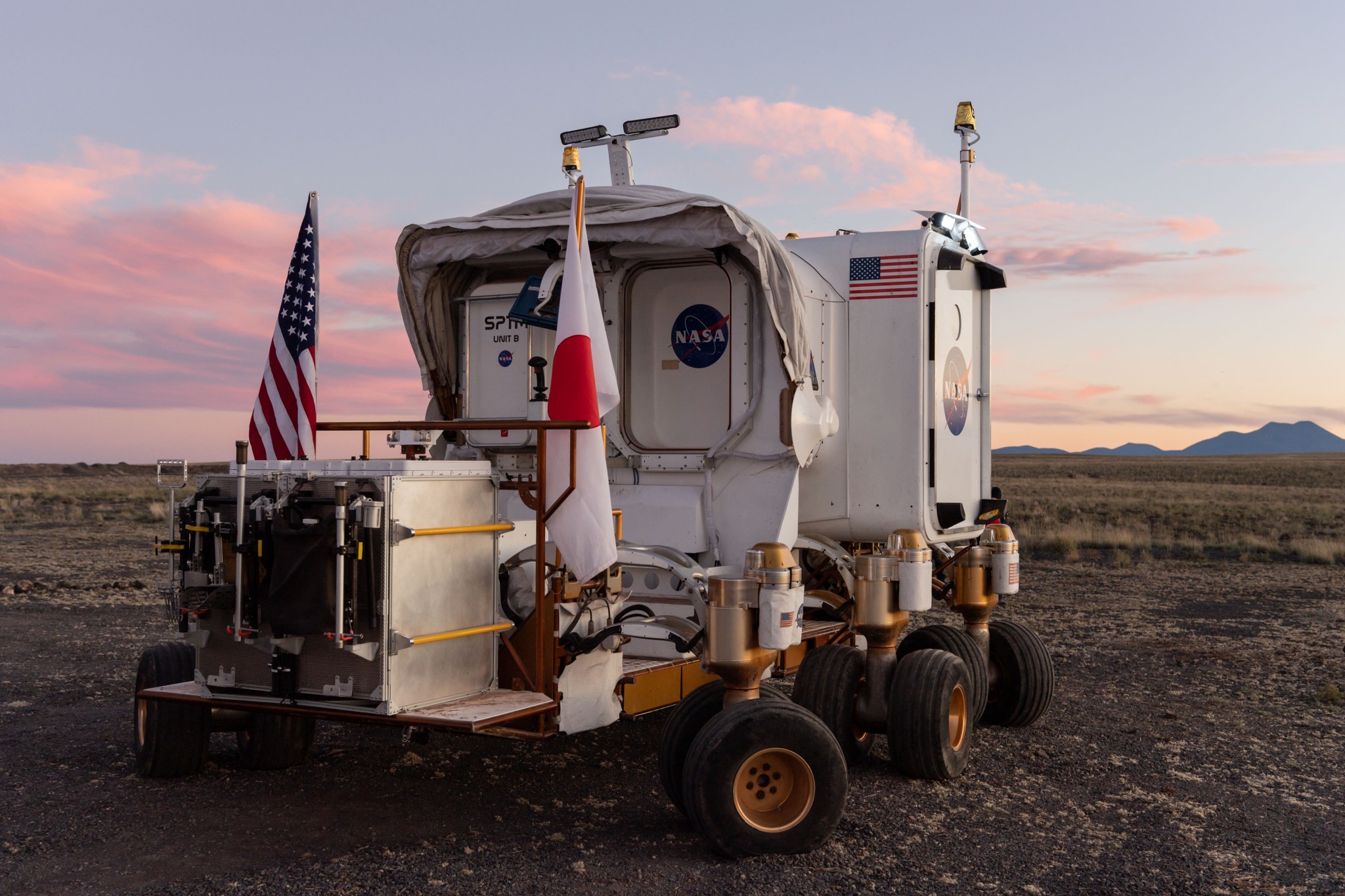Rovers

Contents
Introduction
Rovers are vital for space exploration as they expand human exploration capabilities and enable remote scientific investigation and data collection on planetary surfaces, facilitating our understanding of resources and composition of celestial bodies and their potential for past or present habitability. Johnson Space Center’s (JSC’s) rover and mobility systems experts lead the design and development of electric vehicles tailored for both extra-planetary and terrestrial surface mobility. The team addresses the challenges of off-road use in extreme environments, and dormant periods in crewed planetary missions, proposing, designing, and testing robotic concepts to enable exploration. With expertise in active suspension systems, efficient transmissions, vehicle autonomy and navigation, efficient motor control and high voltage DC systems, we invite our partners to leverage our cutting-edge capabilities in surface mobility. Join us in pushing the boundaries of exploration and robotics technology, where together, we can enhance mission efficiency and open up new frontiers in space.
Capabilities
Electric Vehicle Development
Overview | Design and development of electric vehicles for extra-planetary or terrestrial surface mobility and exploration.
Details |
- Design and development of electric vehicles for extra-planetary or terrestrial off-road use in extreme environments
- Active suspension systems
- Efficient transmissions
- Vehicle autonomy and navigation
- Efficient motor control
- High voltage DC systems
NASA’s Space Exploration Vehicle (SEV) is an example vehicle. The SEV surface concept has a small, pressurized cabin mounted on a wheeled chassis to enable a mobile form of exploration.
- Physical emulation of robotic devices with motion platforms
- Development of Intra-vehicular robotics concepts for remote operations in crew tended spacecraft
- Development of vehicle systems management concepts to provide in situ operational autonomy using
- Distributed, hierarchical architecture
- Clear definitions of interfaces and interdependencies
- Careful design of locus of authority
- Redundancies for data collected in case of failure or degradation
- Robotic capture and berthing analysis of free-flying vehicles
Surface Robotics and Mobility
Overview | The current architectures proposed for crewed planetary missions include significant periods of time in which the planetary base of operations remains dormant with no crew present. During this dormancy period, robotics can be used to maximize the use of the time while crew is present, as well as enable mission objectives which would otherwise not be possible. The Surface Robotics and Mobility team is an interdivisional working group that aims to propose, design, and test robotic concepts that enable the mission of human spaceflight by utilizing this time. Potential robotic operations include logistics transfer and staging, site preparation, and maintenance tasks.
Details |
- Concept development of electric vehicles for extra-planetary or terrestrial off-road use in extreme environments
- Active suspension systems
- Vehicle autonomy and navigation
- Efficient motor control
- Physical emulation of robotic devices with motion platforms
- Development of Intra-vehicular robotics concepts for remote operations in crew tended spacecraft
- Development of Extra-vehicular systems management concepts to provide in situ operational autonomy
- Large scale element mobility concepts
- Clear definitions of interfaces and interdependencies
- Robotic docking and berthing concepts and analysis
- Interfaces with industry leaders to develop spaceflight partnerships
- Testing and data transparency to inform key architectural decisions outside the team
- Robot-compatible interface development and testing (i.e. fluid, gas, & power transfer)
Human Exploration Cross-Program Integration
Overview | Within the Exploration Architecture, Integration and Science (EAIS) Directorate at JSC, the Exploration Development Integration Division (EDI) provides expertise in integrating complex human spaceflight programs across common missions and architectures.
Details | The Exploration Development Integration Division (EDI) delivers systems engineering, cross-program integration, and operations integration support to the entire Moon to Mars enterprise, supporting all Artemis programs. EDI supports design, development and operational life cycle activities and provides integration in support of the Artemis Missions and the Moon to Mars enterprise.
- Orion cross-program integration and crew systems integration
- Gateway risk management and human rating support
- Human Landing System (HLS) cross-program integration and leadership of the Crew Compartment Program Office
- Moon to Mars System Engineering and Integration support
Human Exploration Program Formulation
Overview | Within the Exploration Architecture, Integration and Science (EAIS) Directorate at JSC, the Exploration Development Integration (EDI) Division, provides expertise to human space flight programs for systems and program integration activities supporting program formulation, design, development, and operational life cycle activities.
Details | The Exploration Development Integration Division (EDI) delivers systems engineering, cross-program integration, and operations integration support to the entire Moon to Mars enterprise, supporting all Artemis programs. EDI supports design, development and operational life cycle activities and provides integration in support of the Artemis Missions and the Moon to Mars enterprise.
Human in the Loop Testing and Analog Mission Planning and Execution
Overview | The Exploration Mission Planning Office (EMPO) at NASA JSC provides organizational expertise for analog mission planning and execution and integration of operational testing for space exploration. Human-in-the-loop (HITL) testing develops and assesses systems, innovations, and operational approaches to inform strategic architectural concept of operations decisions.
Details | The Exploration Mission Planning Office at NASA JSC provides analog mission planning and execution of integrated operational testing for space exploration. Human-in-the-loop (HITL) testing capabilities include establishing and coordinating a multi-disciplinary approach for operational testing, integrating analysis and development components across NASA, and using the results of testing in relevant environments for closing technology, exploration, and science knowledge questions, gaps, and risks.
































